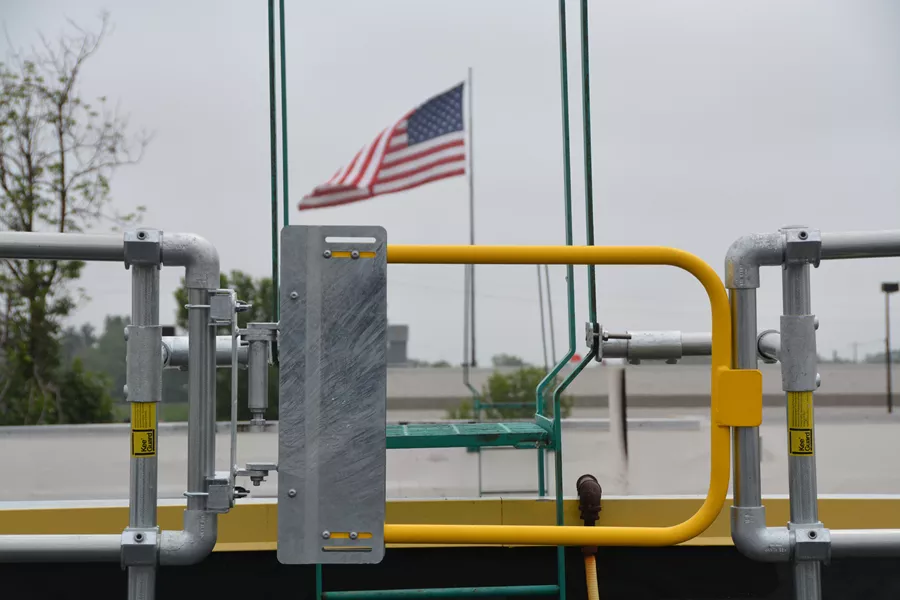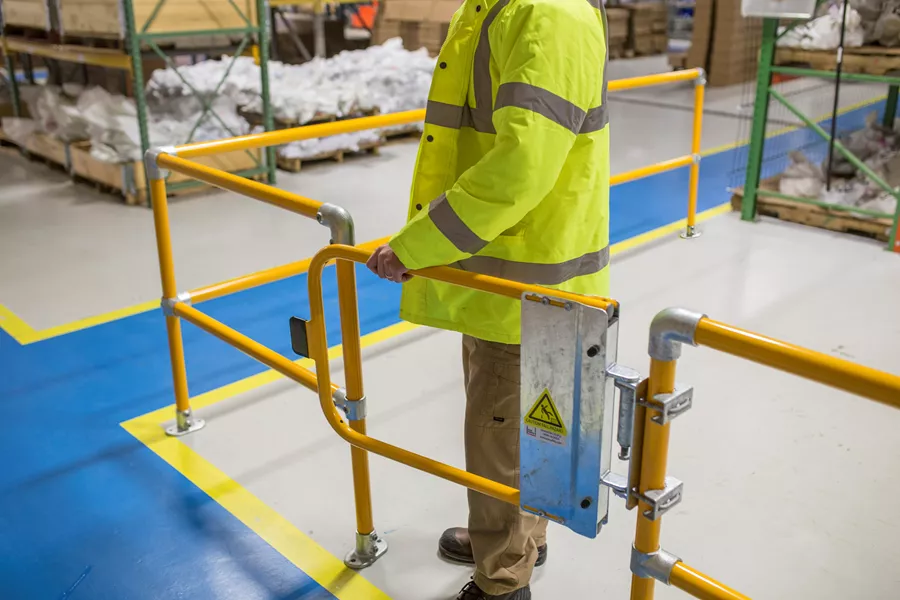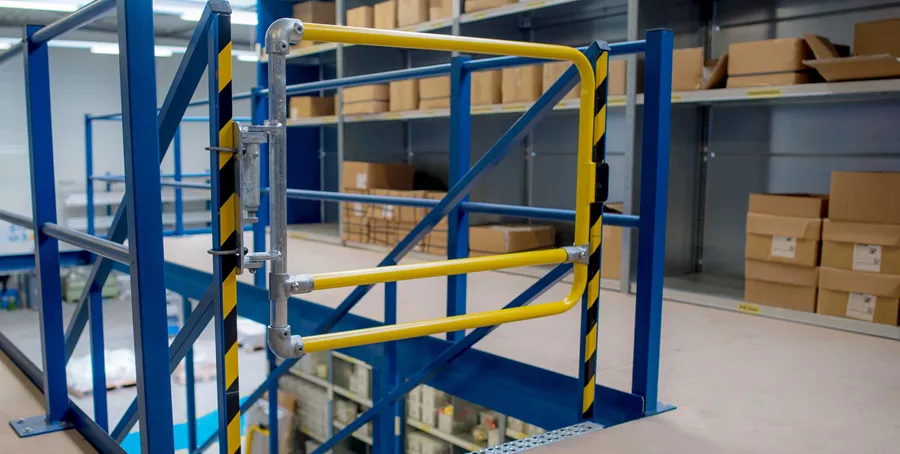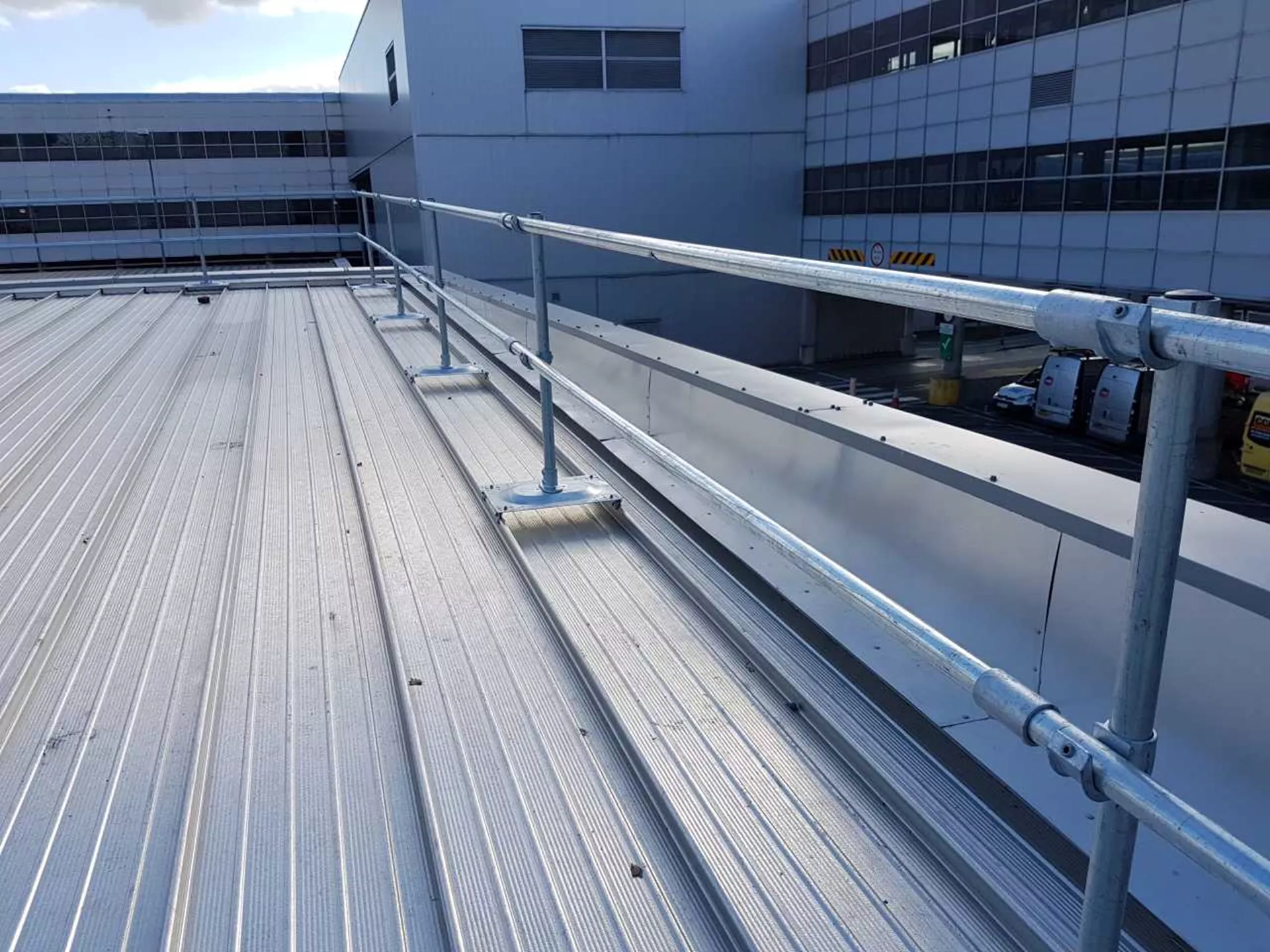

Over 300,000 nonfatal fall-related job injuries were reported in 2019, according to the United States Bureau of Labor and Statistics. As a facility manager, the safety of your employees is a serious concern, especially in areas where hazards pose the potential for injury. To ensure the fall protection for your employees, it's critical that you set up the necessary protections, do the necessary training, and adhere to OSHA standards.
Just as you wouldn't purposefully have a risky mishap at work, you would never knowingly expose your employees to preventable hazards. However, workplace fall accidents can, and can occur with even minor slips or by a worker unknowingly forgetting to do something as easy and familiar as correctly shutting an inside swing gate that they use frequently.
The basis of a responsible approach to fall safety is understanding the workplace environments that frequently call for fall protection and the OSHA regulations that apply to them. The use of self-closing safety gates can help reduce the risk of accidents caused by distraction, forgetfulness, and other human errors. This article will highlight some of the specific benefits of employing these gates.

The primary advantage of using a self-closing gate over a manual safety gate is that it provides constant protection throughout the course of a worker's day.
A manually closing safety gate necessitates that a worker physically close the gate after passing through it. When a worker is carrying a heavy load or rushing to complete a task, this simple step may be overlooked. This leaves the gate open for them or the next worker to fall through, removing the protection that the gate is supposed to provide.
By contrast, a self-closing gate automatically closes after a worker passes through it. The walkways, staircases, and other parts of your building where swing gates are installed are kept completely safe from fall threats thanks to this nearly limitless protection. Additionally, it keeps productivity high and employees focused on their tasks because closing the gate doesn't require a follow-up visit from a worker once they finish their work.

Self-closing safety gates are required by OSHA for use in applications involving fall protection. When choosing installations that are best for your workplace, use your judgment and speak with a qualified safety expert. A self-closing gate that slides or swings away from the hole and is fitted with a top rail, midrail, or equivalent intermediate member that meets the requirements in paragraph (b) of this section are required by OSHA.

Access Control: Its Importance
Access control is a benefit of self-closing safety gates as well as workplace fall protection. Controlling where and how workers can reach unsafe sections of the workplace is the key to reducing hazards because falls from dangerous heights are a leading source of workplace injuries.
Passive protection systems, such as guardrails and swing gates, are among of the simplest and most efficient ways to manage both physical access to areas and the attentiveness of personnel during operations. Having self-closing systems on those gates typically makes sense and is frequently mandated by OSHA.

Actions to Take to Protect Your Workplace
Even the best self-closing safety gates are only a small component of an all-encompassing safety strategy:

There is no one-size-fits-all approach to self-closing gate solutions because of all the variables that apply to different work environments. You should look for manufacturers with a good reputation and speak with a safety expert. Kee Safety is the self closing safety gate experts. We provide self-closing gates with outstanding characteristics like:
Our fully adjustable self-closing safety gates are for usage in industrial or rooftop settings. Safety gates are ideal for protecting any openings, ladder/stair access points, roof hatches, walkways, access to industrial machinery and other restricted areas, where regular access for maintenance and inspection is needed.

Please fill in your details below and we’ll be in touch shortly.